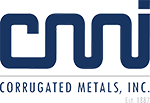Constructing semiconductor facilities involves planning, designing, and building structures for manufacturing semiconductor devices. These facilities, also called fabs (short for fabrication plants), require advanced equipment to meet the stringent requirements of manufacturing processes. It also includes integrating specialized environmental controls, such as temperature and humidity regulation.
The passage of the CHIPS and Science Act has shifted the semiconductor industry. It mandates that components be sourced within the United States rather than depending on imports. This article will provide overview of semiconductor facilities construction and the implications of the CHIPS and Science Act.
HOW SEMICONDUCTOR FACILITIES OPERATE
Semiconductor facilities operate through intricate processes involving wafer fabrication, device assembly, and testing. In the wafer fabrication stage, the facilities produce silicon wafers, which are the base material for constructing integrated circuits (ICs).
The next step is the assembly and testing of the devices. This procedure attaches tiny electrical wires or bumps to the ICs’ packages. The ICs are then subjected to electrical and functional tests to ensure their efficacy, dependability, and compliance with quality standards.
The testing examines functionality, pace, power consumption, and temperature tolerance parameters. It utilizes cleanrooms with stringent air quality standards to reduce contamination risk, which could affect production. Additionally, advanced equipment handles delicate materials with precision and efficiency.
Impact of the CHIPS and Science Act on the Semiconductor Industry
The CHIPS and Science Act aims to bolster domestic semiconductor production. Thus, it has significantly impacted the United States and the global semiconductor industry. The following are the legislation’s key implications:
Promotion of Domestic Semiconductor Machining
The act seeks to reduce reliance on imports by incentivizing and supporting the construction of new facilities in the United States. It also aims to increase the self-sufficiency of the nation’s semiconductor production. This transition is anticipated to improve national security, supply chain resiliency, and economic competitiveness.
Increased Investments in Semiconductor Facilities
With financial incentives and support from the government, companies are constructing new fabs and upgrading existing facilities. This increased investment is crucial to meet the demand for semiconductors across various industries, such as automotive, consumer electronics, telecommunications, and healthcare.
Technological Advancements and Innovation
As semiconductor companies invest in new facilities and equipment, there is a push for developing advanced manufacturing techniques. It also increases the need for more efficient designs and cutting-edge fabrication technologies. As a result, these advancements can improve the devices’ performance, power efficiency, and functionality.
Global Supply Chain Dynamics
With an increased emphasis on domestic manufacturing, there are potential implications for international trade and supplier relationships. The act has prompted discussions on diversifying and reshaping global supply chains as companies and countries seek to secure critical components and technologies.
Corrugated Metals for High-Quality Formed Metal Products and Services
CMI is dedicated to enhancing our product offerings to meet the ever-changing market demands. We strive to stay ahead of industry trends and deliver cutting-edge solutions to our customers through extensive research, development, and innovation. Moreover, our commitment to investing in new equipment and technology enables us to support the development of new products.
Contact us now to learn more about our products and services, or request a quote today!

